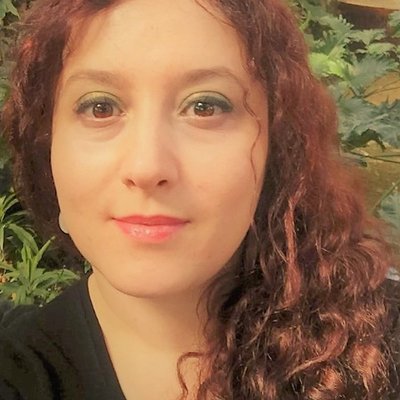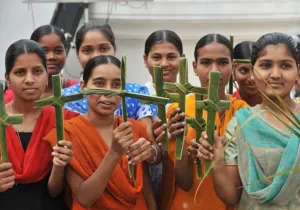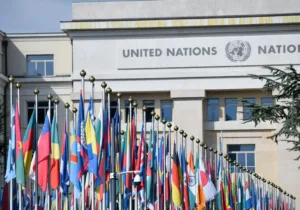Two political activists of Armenian origin have recently been arrested by Turkish police due to social media posts that were critical of the Turkish government.
An author and environmental activist, Cemil Aksu, was arrested on October 25 in the city of Artvin for allegedly “praising crime and criminals” in his social media posts. Aksu is the local co-chair of the opposition Peoples’ Democratic Party (HDP), and is one of the editors of the Gor-Hemshin cultural magazine.
His wife, Nurcan Vayiç Aksu, another activist of Armenian origin, was also taken into police custody on October 19 in a house raid due to her social media posts. Vayiç is a rights activist and a member of the Socialist Party of the Oppressed (ESP). The couple is from the town of Hopa in Artvin, in what is commonly known as the Hemshin region, around 12 miles of the Georgian border.
As long-time political activists and writers, the Aksus have written and spoken out not only about local history and identity in the Hemshin region, but also on environmental matters, women’s rights, and Turkish politics, among other matters.
As a result of the couple’s arrest, their eight-year-old son, Arev, is now being taken care of by his aunt.
On the day of his wife’s detention on October 19, Aksu posted, in part, on social media:
This is a classic of our country. Our home was raided at the wee hours due to Facebook posts. They searched the house. They detained Nurcan and seized my computer and a few books.
Vayiç remained under police detention for three days without police questioning, which led her to start a hunger strike. On the fourth day of her detention, she was finally questioned, arrested, and jailed for “insulting the Minister of the Interior, Süleyman Soylu,” and “propagandizing for a terrorist organization” on her social media account.
“I do not believe that there is a real offence [she committed]. In the period of those four days, they tried to produce evidence to arrest her,” her husband Aksu responded.
Ironically, a day after Vayiç’s arrest, Aksu himself was jailed. And this is not the first time Aksu has been imprisoned due to his activism. He was also arrested for political reasons in 1996 and was released only in 2004.
In the meanwhile, a group of activists in Hopa wanted to read a statement to the press criticizing the detention on October 23 but was interrupted by police with nightsticks and pepper spray.
Ten people were taken into police custody. One of them, Efraim Vayiç, has been jailed while the rest have been released. See how the police reacted here.
Hemshins: Islamized Armenian-Speakers
The Hemshin, also known as Hamshenis, are a community with Armenian roots who inhabit the Black Sea coastal areas of Turkey, Russia, and Georgia.
Historian and journalist Vicken Cheterian writes about the Hemshin people in his book Open Wounds: Armenians, Turks and a Century of Genocide:
The Hemshins (Hamshenahay in Armenian) are a unique people: though they are Muslim, part of their community has preserved the western Armenian dialect, as well as old pagan Armenian traditions, such as the Vartavar feast, an old Armenian pagan festival, still observed today, which serves as a tribute to Astghik, the goddess of water and fertility.
Yet most of this community’s members refuse to be associated with the Armenians and deny having Armenian ancestry. They were separated from mainstream Armenian culture over the course of several centuries. The mystery surrounding these Islamized Armenians has increasingly attracted the attention of scholars.
From Arab Oppression to the Ottoman Oppression
In the eighth century, the Hemshin Armenians are commonly believed to have migrated from the region that is today the Republic of Armenia to the Byzantine Empire (today’s Turkey), whose eastern part constituted historic Armenian provinces. Turkic tribes from Central Asia arrived in the Armenian highlands (today’s eastern Turkey) as jihadi invaders only in the eleventh century.
Hemshin Armenians fled Arab oppression in Armenia proper and found refuge in the Byzantine Empire, but the collapse of the Byzantines and the takeover by the Ottomans marked the beginning of another page of oppression in the history of the Hemshin Armenians—this time at the hands of Ottoman Turks.
“The roots of the Hemshin community have been attributed to a migration led by Shabuh Amaduni and Hammam Amaduni, from the Amatuni noble family based in the Arakadzodn region, northeast of Yerevan in contemporary Armenia, in the mid-or late-eighth century,” explains Cheterian. “They were seeking to escape to the Byzantine-controlled territories in the north in order to free themselves from the oppression they were suffering at the hands of Arab rulers.”
The total Hemshin population in Turkey, Georgia, and Russia is most often estimated today at around 150,000. Cheterian writes that three distinct Hemshin communities live in three different geographic locations:
The Western Hemshen, who live in Rize and are known as Bash Hemshen after the region, gradually lost their Armenian dialect and became Turkish speakers. The eastern Hemshen, who live in the Hopa and Borcka counties of Artvin, eastern Turkey, continue to speak an Armenian dialect largely due to their insular lifestyle in mountainous regions. The third community is the Christian Hemshens, who left their original settlement during the seventeenth century and resisted Islamization by moving northwards. This community currently resides in Abkhazia, or the Krasnodar region of southern Russia. Moreover, there is also a large number of Islamized Hemshins who migrated westward after the 1878 Russo-Ottoman war: 10,000 of their descendants currently live in the environs of Adapazarı [in Sakarya].
Forced Conversions to Islam
Starting in the 17th century, the Christian Hemshin Armenians were (often forcefully) Islamized by the Ottoman Turks. Rev. Dr. Abel Manoukian writes in his book New Saints: Canonizing the Victims of the Armenian Genocide:
The Hamshen [Hemshin] Armenians accepted Islam, despite their ethnic differences in order to preserve their existence. Until this day, even though they are Armenian by ethnic origin, they belong to the Moslem religion.
Indeed, many Hemshins in the region maintained their native language even after converting to Islam. Professor Raymond Kevorkian writes in his book The Armenian Genocide: A Complete History that in 1914, “the mountainous region of Hamşin [Hemshin] was home to an Armenian-speaking population that was converted by force to Islam between 1680 and 1710, and was distinguished by conspicuous cultural traits.”
It appears that Hemshin Armenians had to convert to Islam under Ottoman rule largely to escape the heavy Islamic tax (the jizya) that the Ottomans imposed on them and other non-Muslim subjects of the empire, and to avoid deportation or even death.
As Cheterian notes, “Those Hemshins who remained Christian were either deported or killed—in 1860 a number of Christian Hemshins consequently migrated towards the Russian empire, while those that remained were destroyed as a result of the genocide.”
Professor Kevorkian also notes the massacre against civilian Armenian populations in Artvin as well as in several other towns between December and February in 1915 during the Armenian genocide.
Systematic Denial of Armenian-Hemshin Relationship
Even after the genocide, republican Turkey, founded in 1923, not only failed to give Hemshin Armenians the right to return to their former religion, Christianity, or to possess cultural rights, but also further intensified the efforts of Turkifiying them.
Professor Lusine Sahakyan details the systematic assimilation policy of both the Ottoman Empire and the Republic of Turkey towards the Hemshins, which led them to lose “their real Armenian national identity, retaining only the local ethnographic description through recollections about their Armenian origin.”
She explains:
Assimilation policy of the Ottoman Empire, and later that of republican Turkey, proceeded in several stages, with violent and various systematized methods, as well as through language assimilation.
Not content with a religious conversion and understanding the role of ethnic differentiation in language, the authorities of Ottoman and republican Turkey found the Turkification of the peoples who were subjected to them of utmost importance in completing their assimilation process. Generations of the Hamshen Armenians, Islamized in this reality, gradually lost important components of Armenian identity in the Ottoman-Turkish environment, such as their language (except for the Hamshens living in Hopa and Borchka districts and a few villages of Sakarya province) and religion, were cut off from Armenian culture and were completely assimilated into Turkish society, preserving only their local ethnographic, as they call it, Hamshen identity.
Official discourse in Turkey, an ostensible NATO ally and a perpetual candidate for European Union membership, still denies the Armenian roots of the Hemshin. Cheterian states that:
In the officially-sanctioned Turkish historiography, the Hemshins do not have an Armenian past but are of Turkish origin, belonging to tribes who have migrated to their current location from Central Asia. They are sometimes described as belonging to the Oghus-Turkmen tribes, while on other occasions they are referred to as being related to the Balkars and the Kipchak Turkic group.
As Rudiger Benninghaus has argued, this policy of seeking to deny the Hemshin-Armenian relationship should be seen as part of the Turkish state’s broader policy of eradicating any Armenian presence from north-east Turkey. However, while the Turkish authorities have sought to deny the Armenian roots of the Hemshins, neighboring ethnic groups remember them as Armenian converts.
Many people in the region are known to deny their Armenian roots today—a quite understandable decision given that the country’s Armenian community still faces continued pressures and hatred from the Turkish government as well as from much of the Turkish press and public.
Apparently, Turkey’s government has become the ultimate expert of targeting and victimizing genocide survivors over and over again.
However, Turkish President Recep Tayyip Erdogan said in October that Turkey’s full membership is the “cure for the chronic problems” of the EU:
We are waiting for European leaders to stop targeting Turkey and to return to common sense. There is no benefit for anyone in escalating xenophobia. Dreaming of getting power by means of anti-Islam campaigns will not be useful.
A Europe without Turkey is destined to loneliness, desperation and internal conflict. Turkey does need Europe, but Europe needs Turkey. Although they don’t want to see it, Turkey is the cure for their chronic problems
Turkey has largely exterminated or forcibly Islamized Eastern Christians for decades. What can a state, whose history is filled with many crimes against Christians that it systematically denies, offer to the West or the EU other than more hatred and brutality against Western Christians?
That is why the analysis of Islamic violence or totalitarianism in the region should not begin with the analysis of ISIS (Islamic State) or al-Qaeda. Moreover, before one accuses “Western foreign policy” for all the bloodshed and persecution in today’s Muslim world, one should analyze the region beginning from the seventh century and how Islamist regimes have oppressed religious minorities. Behind almost every story of any nation’s Islamization, there have been horrors including but not limited to forced conversions, threats of violence, kidnappings, rapes, and social, economic, and other types of pressures.
Of course, many Muslims do not murder or violate non-Muslims in the name of religion. But many jihadists do use Islamic scriptures to promote violence while they exterminate, violate, or repress millions of non-Muslims and Muslims. The role of jihad in all the massacres that Muslims have committed against both non-Muslims and different sects within Islam should be therefore discussed and criticized from a human rights perspective.
And that is why the international human rights community should protest the arbitrary imprisonment of the Aksu couple even more rigorously, since they are descendants of a people who have been historically persecuted, violated, and subject to genocide.
—
Uzay Bulut, a journalist and political analyst born in Turkey, is currently based in Washington D.C. She is an associate fellow of the Philos Project and a writing fellow of the Middle East Forum. Her journalistic work focuses mainly on Turkey’s ethnic and religious minorities, political Islam, and the history of Turkey. Follow her on Twitter: https://twitter.com/uzayb.
Photo Credit: Cemil Aksu and Nurcan Vayiç Aksu, via @artvinden and @sinanerensu on Twitter.







 Sponsor a student for Christianity & National Security 2024
Sponsor a student for Christianity & National Security 2024